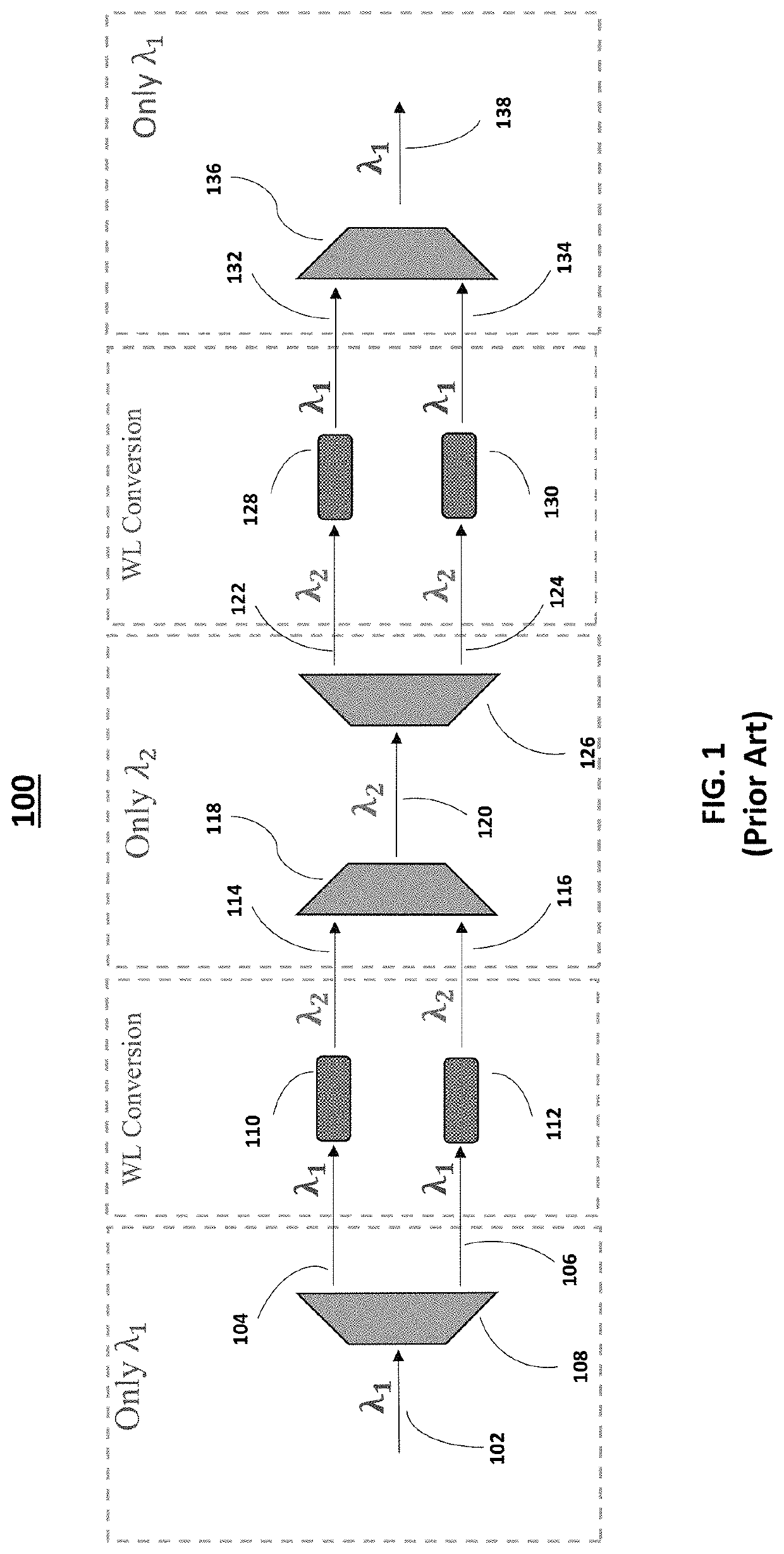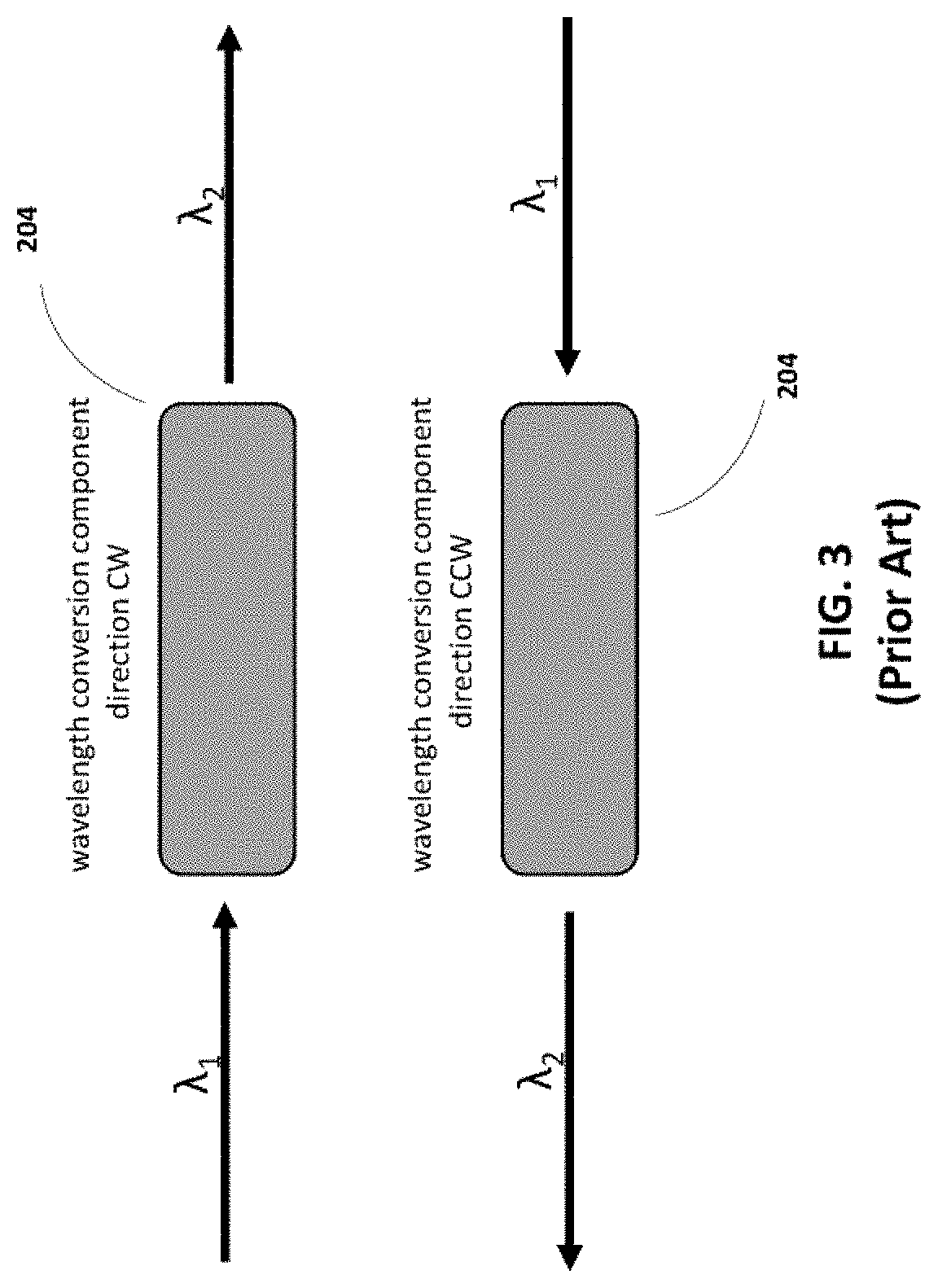Apparatus for broadband wavelength conversion of dual-polarization phase-encoded signal
a phase-encoded signal and broadband technology, applied in the field of electromagnetic field conversion, can solve the problems of increasing bit error rate, prone to distortion and instability of polarization diversity approach, and cumbersome and tedious process of wavelength conversion of electromagnetic field carrying information and with different attributes
- Summary
- Abstract
- Description
- Claims
- Application Information
AI Technical Summary
Benefits of technology
Problems solved by technology
Method used
Image
Examples
Embodiment Construction
[0048]FIG. 4 shows a single-loop counter-propagating wavelength conversion scheme 400 in accordance with embodiments of the present invention. Wavelength conversion is done using a wavelength converting component(s), e.g. a non-linear medium. As is well known to those skilled in the art, mixing a laser input signal and a pump laser signal in a non-linear medium translates the wavelength of the laser input signal to a different wavelength due to sum- and difference-frequency generation. As shown in FIG. 4, wavelength conversion scheme 400 uses two such wavelength converting components 414, 420, which makes it capable of converting dual-polarization signals. In preferred embodiments, one or both of wavelength converting components 414, 420 may be a periodically poled lithium niobate (“PPLN”) waveguide.
[0049]An input signal 402 having a wavelength λ1 is provided to a wavelength conversion loop 404. A polarization multiplexer / de-multiplexer (e.g. polarizing beam splitter / combiner) 408 s...
PUM
| Property | Measurement | Unit |
|---|---|---|
| wavelength λ1 | aaaaa | aaaaa |
| wavelength λ1 | aaaaa | aaaaa |
| wavelength λ2 | aaaaa | aaaaa |
Abstract
Description
Claims
Application Information
 Login to View More
Login to View More - R&D
- Intellectual Property
- Life Sciences
- Materials
- Tech Scout
- Unparalleled Data Quality
- Higher Quality Content
- 60% Fewer Hallucinations
Browse by: Latest US Patents, China's latest patents, Technical Efficacy Thesaurus, Application Domain, Technology Topic, Popular Technical Reports.
© 2025 PatSnap. All rights reserved.Legal|Privacy policy|Modern Slavery Act Transparency Statement|Sitemap|About US| Contact US: help@patsnap.com



